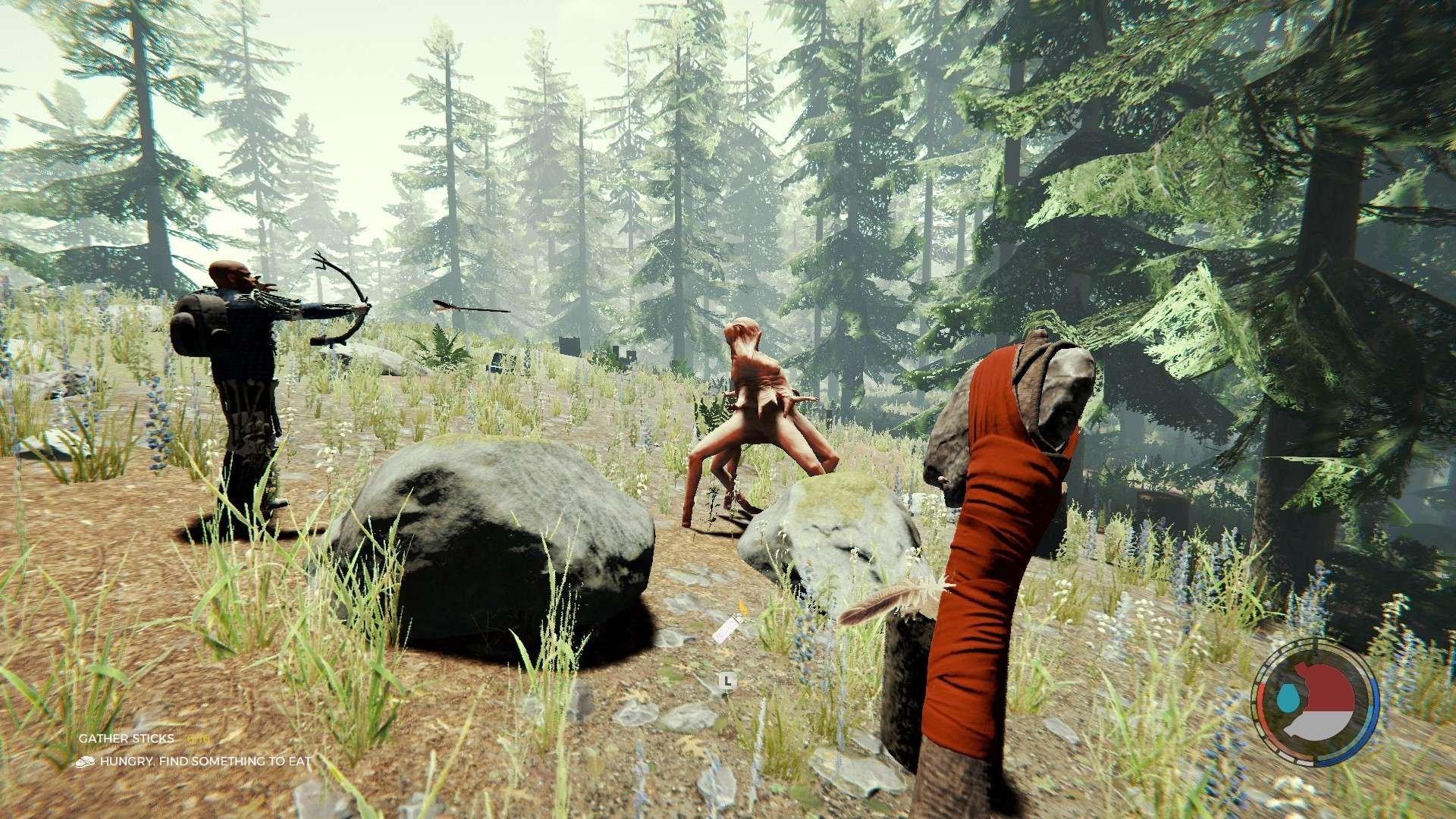This week, I dusted off and played an old favorite from my Steam library: The Forest. To this day, the game remains the best mystery game I’ve ever played. On the surface, the game is a pure horror and survival game. It begins with the player being dropped off on a deserted, forested island that’s teeming with cannibals. As the player begins to wake from unconsciousness, they see one of the cannibals carrying away their son.
What I love about this game is that the mystery very much takes a backseat to the primary mechanics that make the game compelling. The most imminent priority is simply to find and create a shelter, hunt or grow food, keep warm, and hide from (or fight) the aggressive cannibals. Only as the player becomes more confident in their abilities and begins searching the island for a way to escape do they begin to unravel the underlying mystery. This isn’t to say, however, that there aren’t hints that lead the player to understand what’s going on. For example, the player can find cans of orange paint around the map. If they decide to paint their body, they’ll quickly discover that the cannibals no longer attack, and instead bow down, as if they’re worshipping the player. This makes absolutely no sense in the moment, but becomes an ingenious “Ooooohhh” moment once the mystery is solved at the end. The use of game mechanics in this way are sprinkled all throughout the game, and truly add an element of experiential mystery that doesn’t need to be told through cutscenes or another medium.
On a more simple level, the mechanics for exploring and survival lend themselves to the discovery of clues that help the player piece together the mystery. As the player attempts to survive, they inevitably are forced to stray far from camp and explore the island. In their explorations, they find artifacts, photos, magazines, and other remains from past people who have been stranded on the island. Individually these clues reveal very little, but they incentivize the player to keep exploring, and they begin to reveal that the game isn’t just based on survival.
From a narrative standpoint, the mystery is intimately woven into the own players best interests. In order to get off the island, they’ll need to explore and discover the secrets of the island. In this way, the narrative being told maps both to the character’s individual experience and the overarching story of why the island is the way it is. I was purposefully ambiguous in my explanations—I absolutely cannot recommend this game enough. I logged 100+ hours with a friend of mine playing the game before we even realized it wasn’t just a survival game. Worth the time and money for sure!!



